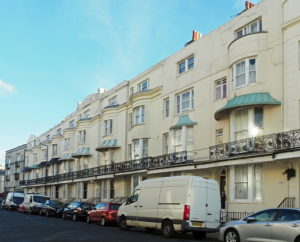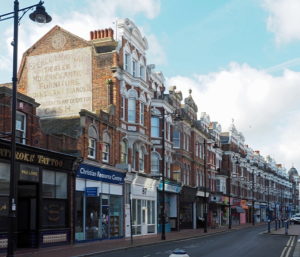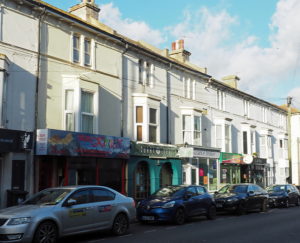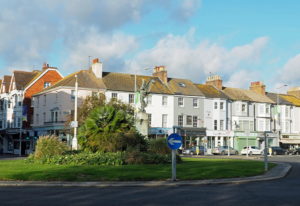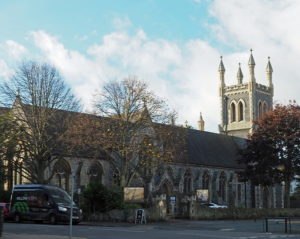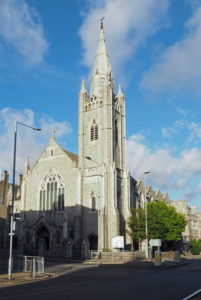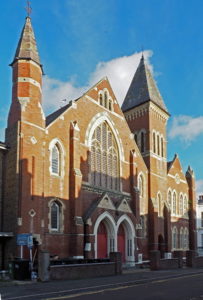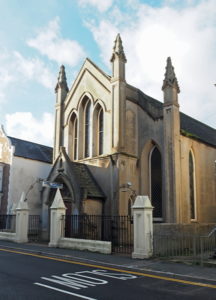Eastbourne grew rapidly after the arrival of the railway and population grew from less than 4000 in 1851 to nearly 35,000 by 1891. This resulted in an explosion of house building and the area behind the sea front is a wonderful example of virtually unspoilt Victorian architecture.
Streets immediately behind the sea front are lined with terraces of elegant houses, many with cast iron balconies. Houses were built before the age of the car, so parking is a problem with many cars parked along the road.
Moving further away from the sea front, houses are smaller.
Seaside Road was a main shopping area with shops below a row of splendid brick houses. Shops along side roads, like Susan’s Road are smaller and the property less impressive.
The War Memorial Roundabout marks the transition from the Victorian building to later growth and the main shopping area.
Holy Trinity Church, originally known as Seaside Road Church of the Holy Trinity, dates from 1838 and just before the rapid expansion of Eastbourne. It is built from flint, like many other churches in the area.
The Church of God at the junction of Susan’s Road and Pevensey Road was originally the Methodist Church. This was built in 1896 when the previous chapel was no longer large enough to hold all the summer visitors. It is now known as the Church of God.
The Ceylon Place Baptist Church is another large and impressive building, dating from 1885. It closed in 2005 and was converted into flats.
The Greek Orthodox church of Saint Pantelemon on Cavendish Place was originally a Calvanistic Chapel built in 1857. It was bought by the Greek Orthodox Community in 1990.
The streets behind the sea front repay exploring on foot. The area is attractive and well maintained with a lot of history.
